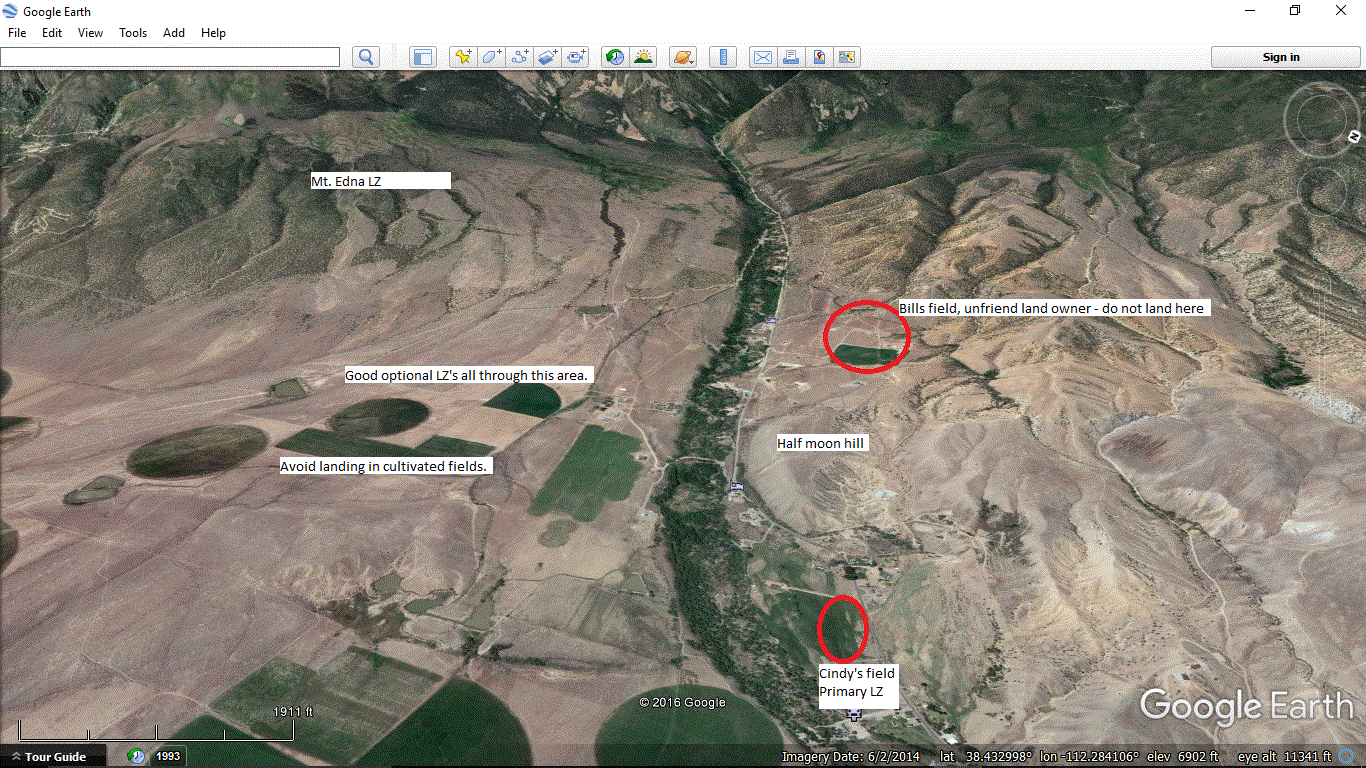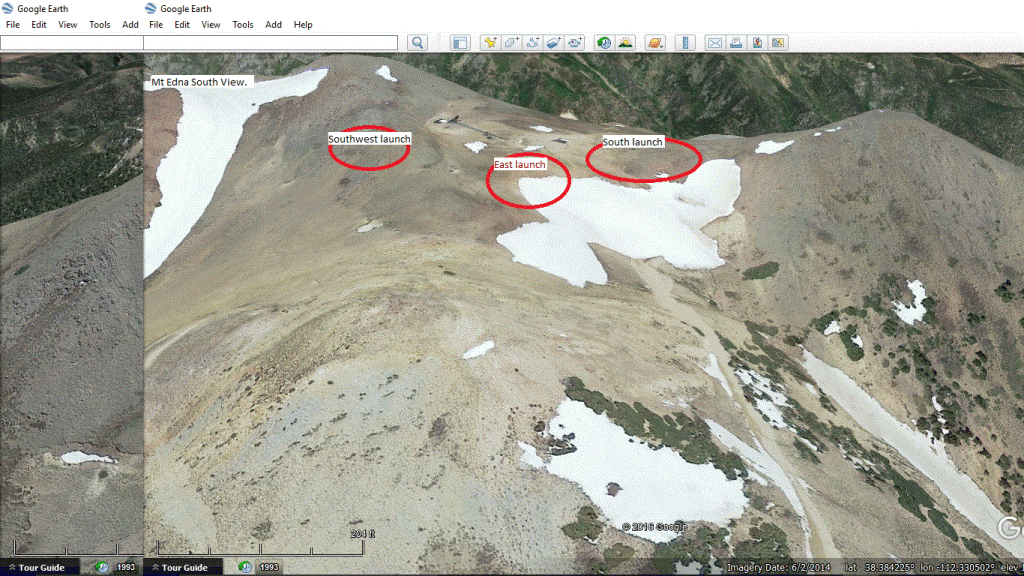
Updated 1.18.24
Utah’s highest drive-up launch at a whopping 11,700 ft! Stunning panoramas of the Tushar Mountain range await you on a flight from Edna.
Some pilots’ personal bests and most memorable flights begin at Mt. Edna. However, all typical high mountain desert flying rules apply here. Such information can be found here.
Special care should be taken to ensure one has the glide to reach a safe LZ in the valley. As the day progresses, the Tushar mountains typically produce a local valley breeze that can be hazardous to the unaware. Because flights begin at such a high altitude on East facing slopes, thermal strength can be very strong even in the early morning hours.
Also note that the Tuschar Mountains are typically the first area to overdevelop on unstable days, and caution should be taken to land before such overdelopement occurs.
Quick Info
- General Site Guidelines HERE
- High altitude Launch at 11,700 ft
- Access Requires a Key from a Local Pilot
- Multiple Launch Directions: See Individual Launches Below
- Recommended Wind Speeds: See Individual Launches Below
- P3/H3 or supervision Required
- Miniwings not Recommended
- 5.5 Minimum Glide Ratio Required
- Membership in USHPA and CUASA. CUASA membership form HERE
Launch
Located in a high alpine meadow near the Mid-Utah radio towers, multiple launch directions are possible. All launches are high mountain launches that deserve the respect and cation associated with such. Beware that even in the early morning, thermals can be amazingly strong. High altitude general flying information can be found HERE. Care should be taken to clear lines before launching as shrubs may entangle them.
Mt. Edna is primarily a morning site. It is advised to not launch later than noon as thermic activity typically sets up a strong valley wind and creates a danger of not having the glide to reach a safe LZ.
If launching from the SW, please note the ridge extending to the East that must be cleared to make it to the valley. Pilots have launched, not had the clearance and had to “top land” on the ridge which is not very friendly for doing so.
North Launch Use Parameters
- H3, Min 6, Ideal 12, Max 15, gusts to 5
- P3, Min 0, Ideal 6, Max 12, gusts to 5
- Direction: Ideal 315-45, OK 300-60
- glide Ratio 6.0
Southwest Launch Use Parameters
- H3, Min 6, Ideal 12, Max 15, gusts to 5
- P3, Min 0, Ideal 6, Max 12, gusts to 5
- Direction: Ideal 210-240, OK 190-270
- Glide Ratio 5.5
East Launch Use Parameters
- H3, Min 6, Ideal 12, Max 15, gusts to 5
- P3, Min 0, Ideal 6, Max 12, gusts to 5
- Direction: Ideal 70-110, OK 50-130
- Glide Ratio 5.5
- H3, Min 5, Ideal 12, Max 15, gusts to 5
- P3, Min 0, Ideal 6, Max 12, gusts to 5
- Direction: Ideal 160-200, OK 130-220
- Glide Ratio 5.5
Launch is high-clearance 2wd accessible in dry conditions. A gate guards access to the last two miles of the road to launch. Contact a CUASA officer before going, and it may be possible to get a key to the gate. Otherwise, parking at the gate and hiking is an option.
Landing Zone
Coordinates:
38°23’08.7″N 112°19’56.1″W
38.385754, -112.33224
Walking the LZ is recommended before flying.




